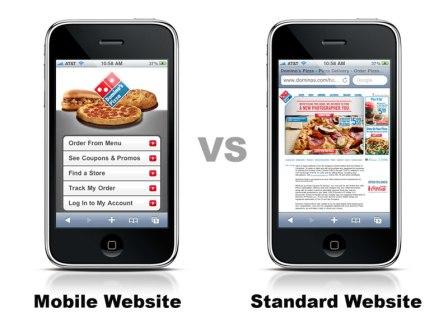Since June 2010, there were 264.5 million data-capable wireless devices, including 61.2 million smart phones or wireless-enabled PDAs in the United States. Microsoft estimates that by 2014, mobile internet usage will overtake desktop internet usage. Yet less than 1% of all businesses have a mobile-ready website. Chances are high that this includes your website.

Just because people can still view your desktop site with a mobile device, the user experience is degraded to such a point that many users will click away and go to a mobile friendly competitor. However big the device screen, viewing a PC Website requires scrolling left and right and up and down. However good the mobile connection, large images will be slow to load, and sites that use flash will not work on some handsets. Take a look at this comparison between a mobile friendly website and a normal desktop website and you’ll see the differences immediately:
A well listed, useful mobile website ultimately gives you the best chance of having local mobile device users find your business. It allows you to give your mobile users the information which they need while on the go. Include maps and driving directions to your place of business, click-to-call phone numbers, and information to entice your customers to contact you. Your mobile website will also serve as a destination to which you can send mobile marketing campaign respondents.